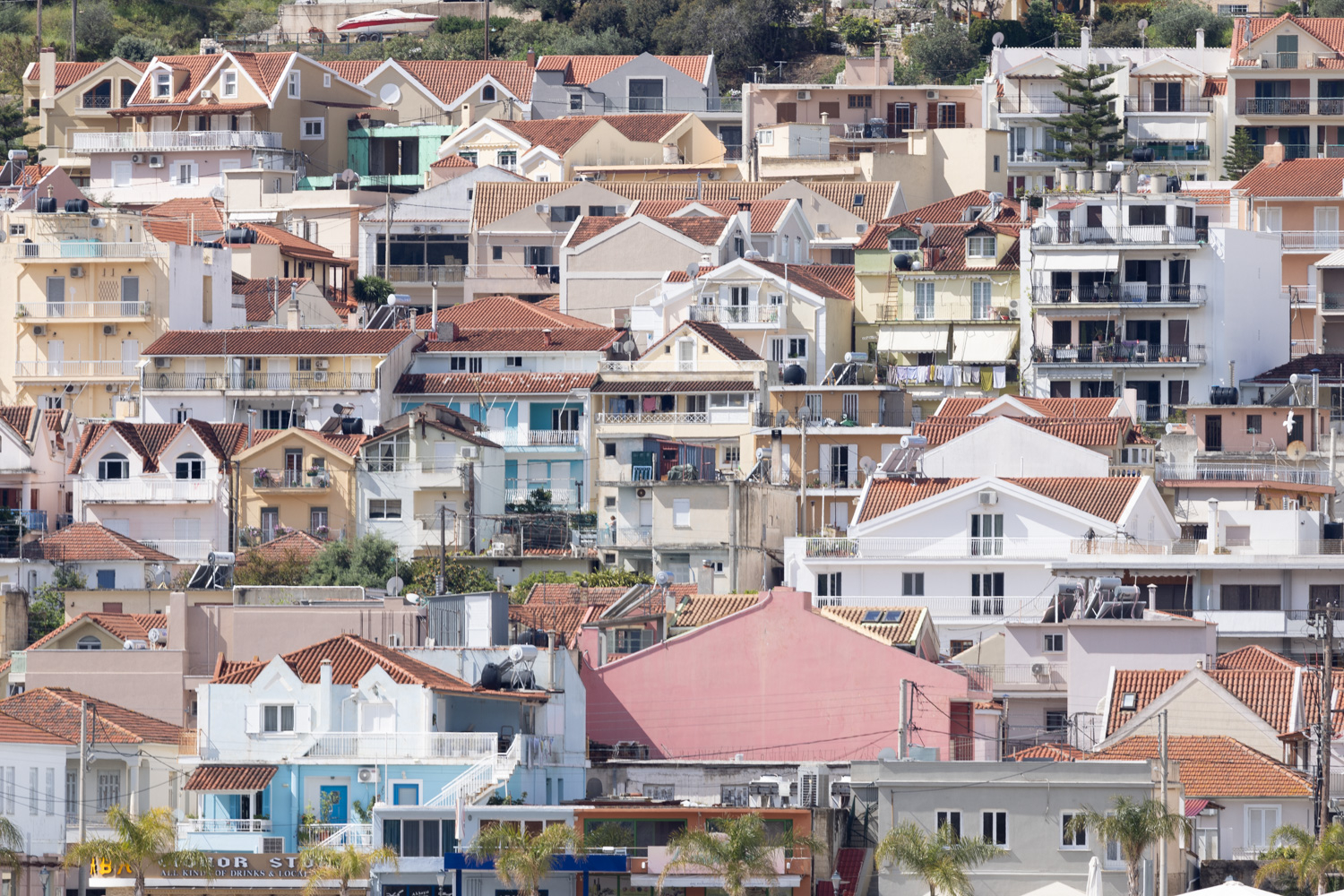
Islands off Elis, Kephallenia. Kranion
4th century BCE
Æ 13mm, 2.48 g, 5h
Crestic Attic helmet left /
K within circular border.
HGC 6, 150; SNG Copenhagen –; BMC 28
Ex St. George Collection
Ex CNG inventory 2001
On our recent trip to Greece, my wife made it clear that she wanted to visit beautiful islands and not ruins. So, I traveled a week ahead of time to get a lot of ruins in, but I also neglected to mention that the islands we chose – Santorini, Mykonos, and Kephalonia, also have some very nice ruins.
In the case of Kephallonia, the large island harbored not one but four ancient cities that each minted coins. On our last day, our flight left from Agristoli, which happened to be the rough location of ancient Kranion.
Below is Asos, which lies at the far north of Kephallonia and is where we stayed.

Below is modern Agristoli. It’s not really a very interesting town, but it’s all most cruise passengers ever see of Kephallonia since all the ships arrive there and, due to the topography, distances on the island take a long time to travel. The bridge is called the De-Bosset bridge and is the longest stone bridge over the ocean in the world. I wouldn’t really say it’s “over the ocean”, but it’s a cute bridge. In the middle is a statue that commemorates the British for being British.

In the water are a number of sea turtles. They were the real reason I agreed to lunch in the town.

Here’s a closeup of Agristoli.

Anyways, while we were driving around the area, I saw a sign that said “to ancient Kranion”. So, we followed it and the signs went all over the place until we were royally lost.
Not one to be so easily defeated, I looked up the ruins on my phone and found the gps coordinates. I then had my phone find a route. The road kept getting narrower and narrower until it was just a dirt thing with lots of rocks. We took it very carefully but with 1 km to go my wife freaked out that we were going to bottom out the car and get stuck there. Earlier in our trip rats had eaten wires in our engine and we got stuck at this spot.

It was a very pretty place to get stuck, but the winds were really high and a few times it felt like they would lift our little car and throw it off the edge. My wife was probably thinking of that as we went down this little road.
So, she insisted we stop and I suggested we take the remaining 1 km by foot since we had time, but she was done with Kephallonia so, to this day, I don’t know whether we were close. I suspect we were going the wrong way based on the descriptions of Kranion.
William Martin Leake, the explorer, did manage to find Kranion and remarked that its city walls were nearly intact and in excellent condition. Their location was also nearly impenetrable, which didn’t match the description of where we were. Someday I’d like to return to Kephallonia and find them.
But, in the meantime I have this coin that I just won at auction. It may be the best example of the type in private hands.
Athens settles Spartan helot deserters and Messenians from Pylos at Kranion.
Athens transports the Spartan helots and Messenians previously moved to Kranion back to Pylos to annoy Sparta.
Kranion surrenders to the Romans without resistance.
April 18
The author of this page and his wife get lost while trying to find the ruins of Kranion, and are forced to give up the endeavour.